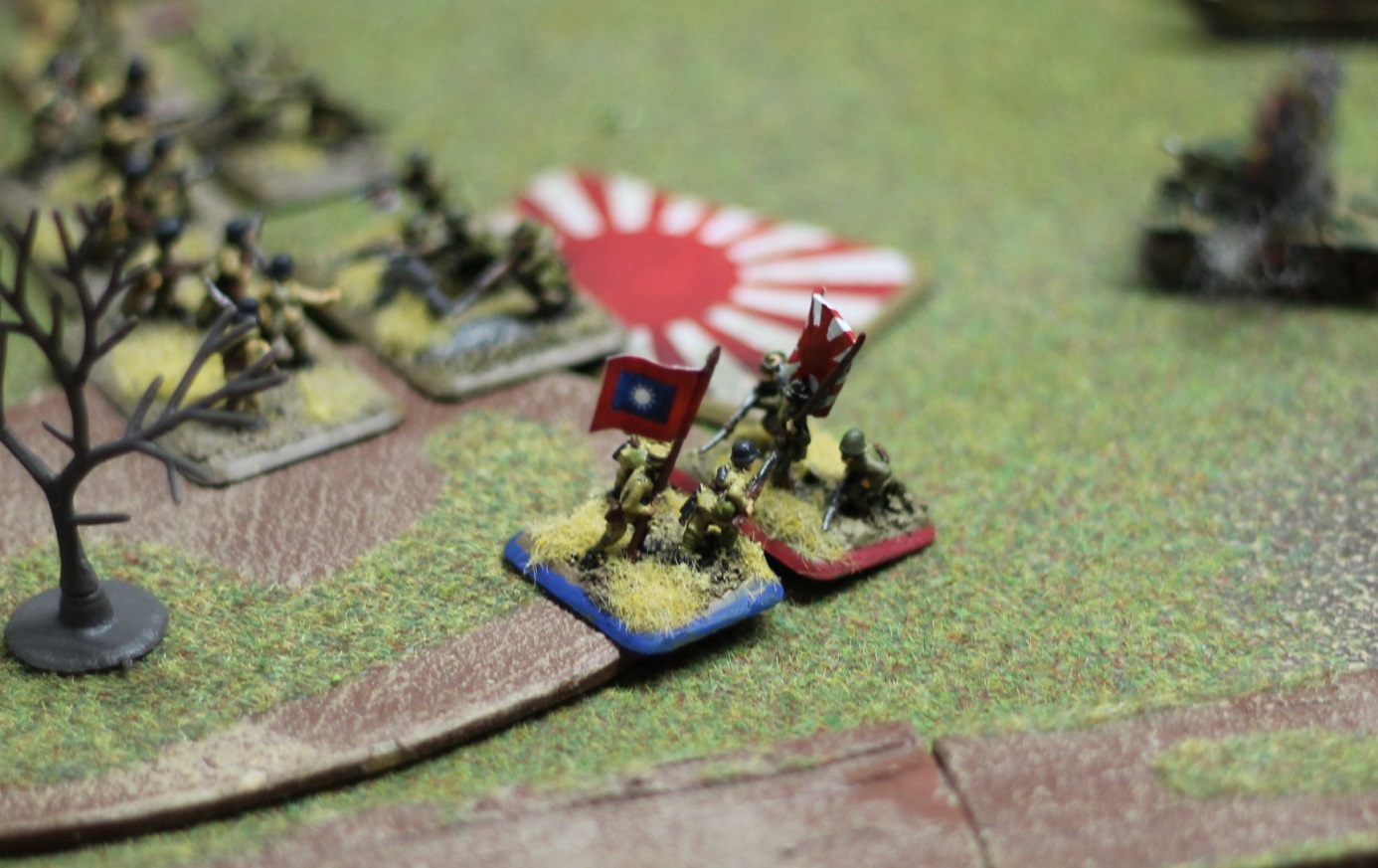Battle for a Doomed City: Gaming Nanjing 1937 (Part 1)
- By Guest blogger
- 6 May, 2017
- 2 Comments

This article is written by G. Jökull Gíslason, an Iceland-based wargamer and historian with a special interest in the Second Sino-Japanese War. It shows how wargames and simulations can add an extra dimension to the study of past events.
China in World War II has been a fascinating subject for me and I have been looking into designing Chinese forces for Flames of War. I have not been alone in this and the war in China has a lot to offer a dedicated modeller and wargamer. I have been designing a Battlegroup for Flames of War that focuses on the German trained Chinese Divisions that were the Elite of the Kuomintang Nationalist Revolutionary Army. These divisions were at the centre of the fighting in the first battles of the conflict in Shanghai and Nanjing.
During my research I have become friends with Peter Harmsen, the author of Shanghai 1937: Stalingrad on the Yangtze and Nanjing 1937: Battle for a Doomed City. These are easily two of the best books in English you can find on any battles in China during the war. Then by a stroke of fortune Peter came to Iceland to do two lectures and I invited him to my house for dinner and then a game of Flames of War. It would be the first battle for my newly painted Chinese and Japanese forces. Peter has never played a Flames of War battle before so I invited Brjánn to be his lieutenant. Luckily Flames of War is a straight forward game and everything works almost as you would expect so it is easy for a newcomer.
I selected the two armies and the battle is set on the Yuhuatai plateau south of Nanjing’s Zhonghua Gate. Here the NRA had set up trenches, barbed wire, pillboxes and barbed wire and the defences were manned by 3 divisions. One of them was the German trained elite 88th Division. Against them was the Veteran 6th IJA Division. The fighting around Yuhuatai was hard and inflicted heavy casualties on the Japanese. Even though Nanjing fell the battles here were more even. I offered Peter to choose which side he wanted and he opted for the Japanese attackers.
As both forces are predominantly infantry forces I decided to select Counterattack as the mission since it allows for fortifications and a mobile battle. The terrain was sparse on purpose since it was to reflect a fortified battle area. To assist in the assault the Japanese players elected to do a night attack so we fought using the Dawn rules.
THE CHINESE FORCES

The Chinese Nationalist forces had received instructions from German military advisors since 1934. Most notable of these was Alexander von Falkenhausen. The Germans were to lead the Chinese military modernization and train the National Revolutionary Army to modern standards. Unfortunately only a few divisions had undergone such training when the conflict broke out but among them was the famous 88th Division. It had taken part in the heavy fighting in Shanghai and a strong detachment fought on the Yuhuatai plateau.
In addition to providing military advisors the Germans also supplied the Chinese with modern weapons. But China was poor and could only buy a limited number. Most of this was equipment was provided for Chiang Kai-shek’s elite divisions as you can see in the equipment of these troops.
Chinese deployment

88th Division
National Revolutionary Army NRA
German Trained Infantry Battalion
Fearless Trained
HQ
1 CiC team and a Banner team
COMBAT COMPANIES
German trained Lián
2 rifle platoons
German trained Lián
2 rifle platoons
In Reserve
Heavy Machine-gun Lián
4x heavy machine-guns
WEAPONS COMPANIES
Mortar Lián
4x 81mm mortars
DIVISIONAL SUPPORT
Anti-tank Lián
2x 3.7cm PaK36
In Ambush
NRA Artillery Battery
4x 15cm sFH18
FORTIFICATIONS
Strongpoint
9 trenches & HMG nest
Strongpoint
– Not deployed
Barbed Wire
4 sections
Gun positions
Trench + 4 gun pits
Gun positions
Trench – 2 gun pits
– Not deployed
THE JAPANESE FORCES

6TH Division
Imperial Japanse Army IJA
Hohei Chutai
Fearless Veteran
HQ
2x Command Sword teams
Regimental Standard
COMBAT PLATOONS
Hohei Platoon
3 Rifle squads and banners
Hohei Platoon
3 Rifle squads and banners
WEAPONS PLATOONS
Hohei Battalion Gun plt
2x Type 92 70mm
SUPPORT PLATOONS
Hohei Rapid-Fire Gun plt
2x Type 94 37mm guns
Hohei Regimental Gun plt
2x Type 41 75mm guns and observer
Medium Sensha Company (2x plt)
HQ – 2x type 89 Chi-Ro and 1 type 94 TK
3x Type 89 Chi-Ro
BATTLE PLAN AND INITIAL DEPLOYMENT
The Chinese set up their strong point in a central position with one Infantry Company and both HMG and Mortar platoon in the same trenches. In front was a HMG nest. Inside the strongpoint was the defenders objective marker. On the right flank the heavy 15cm artillery was deployed. The 3.7cm guns were in ambush and the second Infantry Company was in reserve. The barbed wire was set up to delay any flanking moves by the Japanese.


Peter and Brjánn disagreed on the main plan. Peter was tempted to go for a frontal assault against the strong point but Brjánn thought that plan suicidal. The Japanese placed the other objective as far away from the Chinese strongpoint as possible and then they decided on Brjánn’s plan and deployed for a strong flanking manoeuvre towards it. They elected to go for a night attack to save them from the worst of the Chinese fire in the first turns.
The Japanese set up for a strong flanking manoeuvre against the undefended objective.
(To be continued)



 Copyright © 2025
Copyright © 2025
lian=连= company
pai=排=platoon
What rules were used of the Chinese?